How to plant and grow ampelous petunia from seeds?
Although this plant is ubiquitous, planting ampelous petunia and its further cultivation requires certain knowledge. But if you do everything right, you can get a wonderful decoration for a garden or balcony. Modern varieties amaze with an abundance of colors, sizes of flowers, there are even double species. They look bright in flowerpots, and some gardeners practice the design of alpine slides using them. In addition, caring for petunias is not very difficult, you just need to water and feed on time.
Types of petunias and propagation by cuttings
All varieties of petunias can be divided into three types:
- Creeping. Its stems are directed upwards, later they spread on the ground.
- Semi-ampel. Shoots are short, up to 40 cm. They are directed downward, and there are a lot of them, so the plant is abundantly covered with flowers. Looks very nice in hanging pots.
- Ampelnaya petunia has long stems, up to 1.5 meters, they hang down, forming a dense opaque canvas. They are grown in large pots or boxes.
Cascading petunia will definitely decorate the garden. You can buy ready-made, most often already flowering, bushes in a specialized store. Or you can start growing yourself. If there is suitable material, then cuttings are allowed. If conditions are right, it will be effective all year round. Its advantage is its rapid flowering, which begins within a month.
To obtain a new plant using this method, apical cuttings are cut from healthy bushes. They are placed in seedling trays or other containers filled with soil mixture. Leaves, except for the top two, must be carefully removed. Planting should be done immediately after cutting the cuttings. After the procedure, the seedlings should be watered and covered with glass or film, put in a bright place. Temperature range - from 20 to 24 degrees. Further care is the same as in the case of plants obtained from seeds.
How to grow petunia from seeds?
Most often, gardeners grow petunias using seeds. We must be prepared for the fact that seedlings will have to pay a lot of attention. But the result will surely please.
Growing from seed usually begins in February. This can be done earlier, but only if there is additional lighting: then leaving will make sense. After all, petunia, cascading or any other, is very light-loving, for germination and successful growth it needs a lot of light. Seeds are sown on the surface and do not sprinkle with soil, otherwise they, most likely, simply will not sprout. But there is no need to worry that the coated seeds will not germinate. They are pretreated so that they have a higher germination rate than ordinary ones.
You can sow in boxes, then a pick will be needed later. Or in cups - then leave the strongest sprout, then a difficult procedure can be avoided. If these are special hybrid seeds, then you can sow them one at a time - they will certainly sprout. Containers in which planting has already been made are also sold; they only need to provide care.
Advice
Petunia seeds are very small. To ensure even seeding, mix them with dry sand.
Sprinkle the soil with water from a spray bottle before sowing. Then the containers should be covered with foil or glass to create a suitable microclimate. They must be lifted daily for ventilation. The cover is removed only after the first leaf appears. The air temperature should be between 20 and 27 degrees.It is necessary to ensure that the soil does not dry out, otherwise the ampelous petunia will simply die. It is also important to avoid waterlogging so as not to provoke the development of diseases. This is care.
Diving of petunia sprouts and transplanting
If done correctly, the cascading petunia will germinate in 7-10 days. Leaves will appear soon. If the landing was made in one box, then it's time to start diving. The procedure must be carried out very carefully, since the stems of this plant are fragile. First, water the soil, then pry the sprout with a stick and pull the leaves to remove. As much soil as possible should remain on the spine.
Further, the sprouts must be placed in cups, the planting depth must correspond to the previous one. For several days, the container should be placed in a bright place, but not in direct sunlight. When the plant gets a little stronger, you can safely put it on the windowsill. Adequate light is very important for normal seedling development. Otherwise, the cascading petunia may stretch too far. If this happens, then the care does not need to include fertilizing with nitrogen fertilizers.
After the threat of frost has disappeared, the plant can be transplanted into open ground. Ampel petunia is usually grown in flowerpots and boxes, because it is in the shoots hanging down that its charm lies. If it is possible to bring these containers into the house in the event of an unexpected cold weather, then planting can be done earlier.
It is recommended to temper the plants before this point, so that they get used to the fresh air. Such care is important for seedlings. It is better to choose a cloudy day for transplantation or to engage in the procedure in the evening. The distance between the bushes must be maintained at least 20 cm, because they will grow and become lush. Before planting, the soil must be well watered, after the end of the process, repeat this again. Watering should not be carried out at the root, so as not to damage the plant. It also makes sense to mulch with peat or humus, this will help to retain moisture and keep the roots intact. Even if the upper part dies, the ampelous petunia can grow again.
How to care for a plant?
Caring for ampelous petunia consists of two main activities: watering and feeding. It is necessary to water the plant abundantly, the water should be settled. Ampelous petunia has a large vegetative mass, it vitally needs a lot of moisture, because it evaporates quickly. But if the cultivation takes place in pots, then it is important to ensure that there is no excess of it in the flowerpot or pallet itself. The roots can quickly rot and the plant will die.
Feeding is extremely important. Fertilizers will help to achieve the splendor of the bush and abundant flowering. They are used for the first time a week after the transplant, and then repeated weekly. There are special complex fertilizers, the composition of which is selected specifically for this plant. It has a positive effect on the condition of the bushes and the mullein infusion.
Do not be surprised or worried that when the snap gets cold, new buds stopped appearing. When it gets warmer, the flowers will start growing again. If the plant is very elongated, then it is recommended to shorten the shoots. Then the growth of lateral shoots will increase, and the bush will again seem lush.
Even if the care was of high quality, diseases cannot be completely ruled out. Most often, plants are affected by powdery mildew, especially if the weather is damp for a long time. If a grayish bloom appears, then it is necessary, without delay, to treat the bushes with a fungicide.
Rain and wind can also damage the plant - delicate flowers break and lose their shape. Therefore, it is better to put boxes and pots indoors.
Petunia ampelous is a beautiful plant, a variety of colors and shapes of flowers which makes it possible to create bright compositions. It will revive both the balcony of an ordinary high-rise building and any garden.It can be used to form alpine slides and rockeries. Variegated shades invariably delight the eye.Caring for petunia is simple, but you need to have some knowledge for successful cultivation. Especially if there is a desire to independently sow seeds for seedlings. Timely watering and feeding, maintaining the temperature and lighting will help achieve the result.
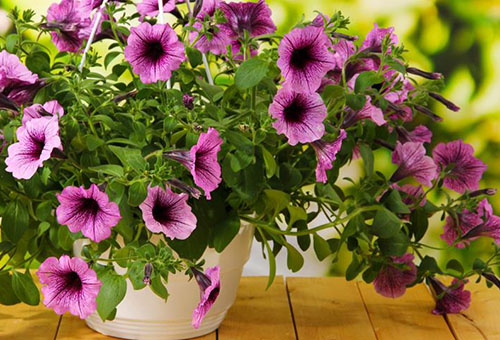
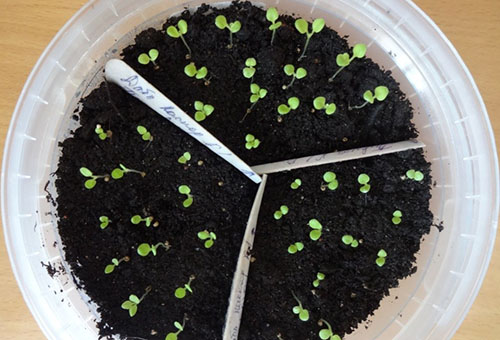
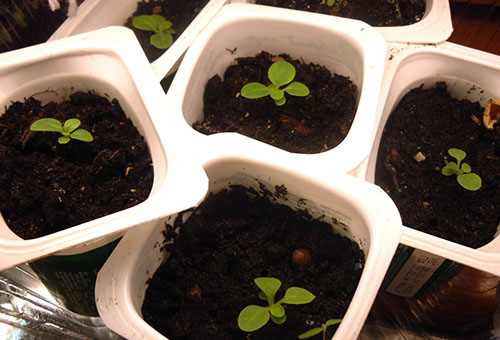
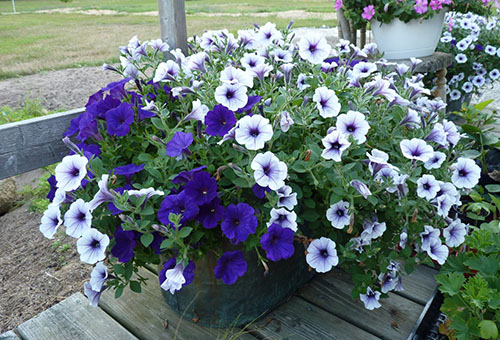
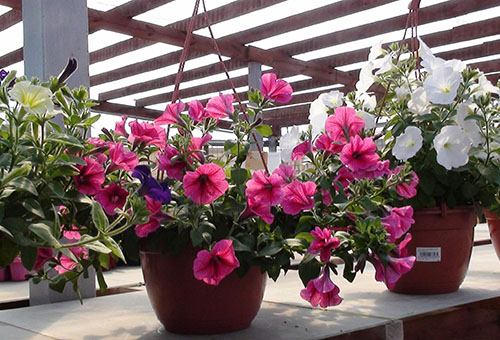
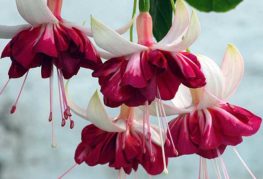
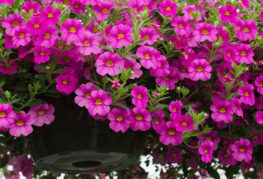
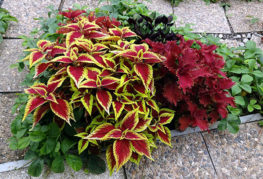


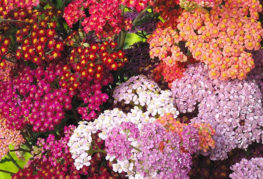
and will be published shortly.